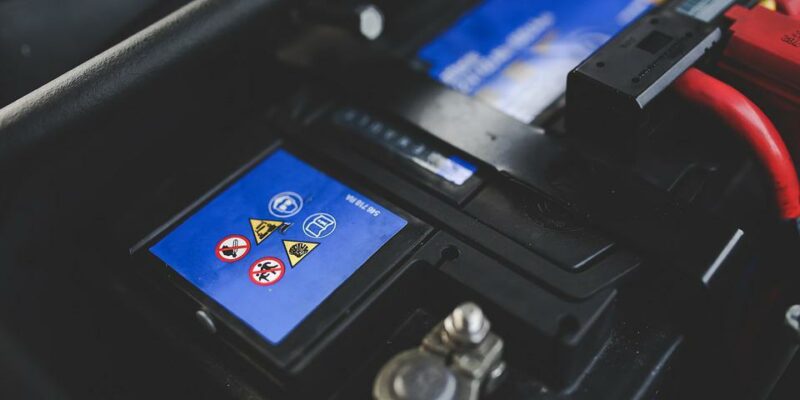The LiFePO4 chemistry lithium batteries are incredibly stable, eco-friendly, safe, and long-lasting. Its wide range of applications has made it popular in recent years. To learn about Lithium Iron Phosphate Batteries and get the longest battery investments, a list of guidelines on how to keep it healthy and safe is unfolded in this post. Additional tips on maximizing the benefits of using them are also provided.
What Is LiFePO4 Battery?
LiFePO4 is a specific lithium-ion chemistry. Its full name is Lithium Ferro (Iron) Phosphate Battery, also called LFP. Whenever you read lithium-ion batteries, this is actually a GENERIC description for all batteries that use lithium ions. Briefly speaking, the LiFEPO4 battery is a lithium-ion battery. However, not all lithium-ion batteries are lithium iron phosphate batteries.
Now that you clearly understand it, know the parameters when using or buying lithium iron phosphate (LiFePO4) batteries as follows:
- Battery Voltage
Use a multimeter measurement, battery monitor, and solar charge controller to check it.
- Max Charge Current
- 4.2V per cell
- Max Discharge Current
- 100 Amps
- Cycle Life
- More than 5000 times.
- Warranty
- Extra Functions
Reminder: Rechargeable lithium-ion batteries deteriorate gradually in lifespan and capacity to hold a charge. It’s a condition called ageing (loss of capacity) which is irreversible, and the run time decreases too. Use them as regularly as possible because they slowly discharge when you suspend their usage for a period of time. Use the following tips to keep them healthy and safe to use.
Healthy and Safety Tips
- Avoid overly deep discharging to keep its lifespan longer. Ideally, stick to a maximum of 70-80% DoD (depth of discharge), except in emergencies.
- Use a wire brush to clean battery terminals. It helps to remove oxidation prior to the installation of the battery interconnect and BMS module. The result will improve conduction and reduce heat buildup at the terminals.
- Make use of correct terminal mounting hardware to avoid loose terminal bolts after installation. In such as way, you can avoid high-resistance connections risk.
- Avoid over-charging and over-discharging batteries to prevent premature failure of LiFePO4 batteries.
- Storing LiFePO4 battery
- For a shorter period, it must be 50% or higher in the state of charge.
- Charge it up to 100% for a more extended period before storing.
- Store them indoors at room temperature.
Make sure that batteries are not left unused for extended periods. Check the charge status if they are not used for six months. Do not leave batteries unused for extended periods in the product or storage. Apply appropriate action when it is called for. Charge or dispose of.
6. Charging
By default, use a LiFePO4 battery charger. If you lost or misplaced it, a lead-acid battery charger can be an alternative. Just ensure its voltage settings are within the acceptable parameters of LiFePO4 batteries.
- Charger’s cables must be insulated and free of breakage.
- Charger terminal connectors must be clean and properly mate with the battery terminals. Do these things to ensure a good connection and optimum conductivity.
- If not fully discharged, there’s no need for charging after each use. Or, wait until 80% DOD (20% SOC).
- When disconnection takes place, it’s the immediate response of the Battery Management System BMS). The common cause is the battery’s low voltage (voltage will be <10V). Address it by removing the load and charging using the LiFePO4 charger immediately.
- Look also for temperature levels when charging. It must be within the range of 0°C to 45°C (32°F to 113°F).
- When batteries are in parallel, the charging follows these system voltage parameters for charging:
12V: 14V – 14.2V
24V: 28V – 28
36V: 42V – 42.6V
48V: 56V – 56.8V
- If the charger’s voltage is lower than listed, undercharged.
- If the charger’s voltage is higher than listed, the battery management system (BMS) may disconnect.
Reminder: When batteries are connected in series, strive to keep the voltages of each battery within 50mV (0.05V). Then, use a multi-bank charger. It charges each battery independently. If you’d like to charge your system as a whole, use a 24V LiFePO4 charger or a 48V LiFePO4 charger.
Additional Tips: Increase Battery’s Lifespan
If you are wondering how you can extend its life to maximize its great features, there are four areas to watch for:
- Beware of Extreme Temperatures
- Get rid of extreme temperatures(high and low)whether you are using, charging, and storing them.
- Charge wisely by looking after the amount of time spent. Use partial charging as 80% SoC instead of 100%. In situations where it is not possible, unplug it once it reaches 100%.
- Use standard chargers instead of fast chargers. Fast charging tends to degrade the battery more quickly.
- Charge the battery within this temperature range, between 32 F and 104 degrees.
- Do not store the batter in high-moisture environments.
- Check for any mechanical damage, such as punctures.
The degradation of the battery takes two forms: capacity fade and power fade. Extending the battery life helps to decrease costs and environmental threats such as greenhouse gas emissions.
“As the mobile electronics and EV industries continue to grow, even small improvements in lifetime extension will have significant environmental benefits,” the authors of the Journal of Energy Storage paper wrote.
“As the nation and world shift to economies powered by batteries, it is paramount that we extend the life of all types of batteries, particularly those in our cars and trucks,” said Steve Christensen, executive director of the Responsible Battery Coalition.
Conclusion
The battery has a BMS or Battery Management System. Its main role is to protect the battery by disconnecting it when it discharges or threatens to over-charge. These are just one of the vital functions it maintains. Keep them with a careful look. In such a way, you’ll be able to keep the battery healthy for safety uses. So, do not purchase or use batteries without BMS.













Comments